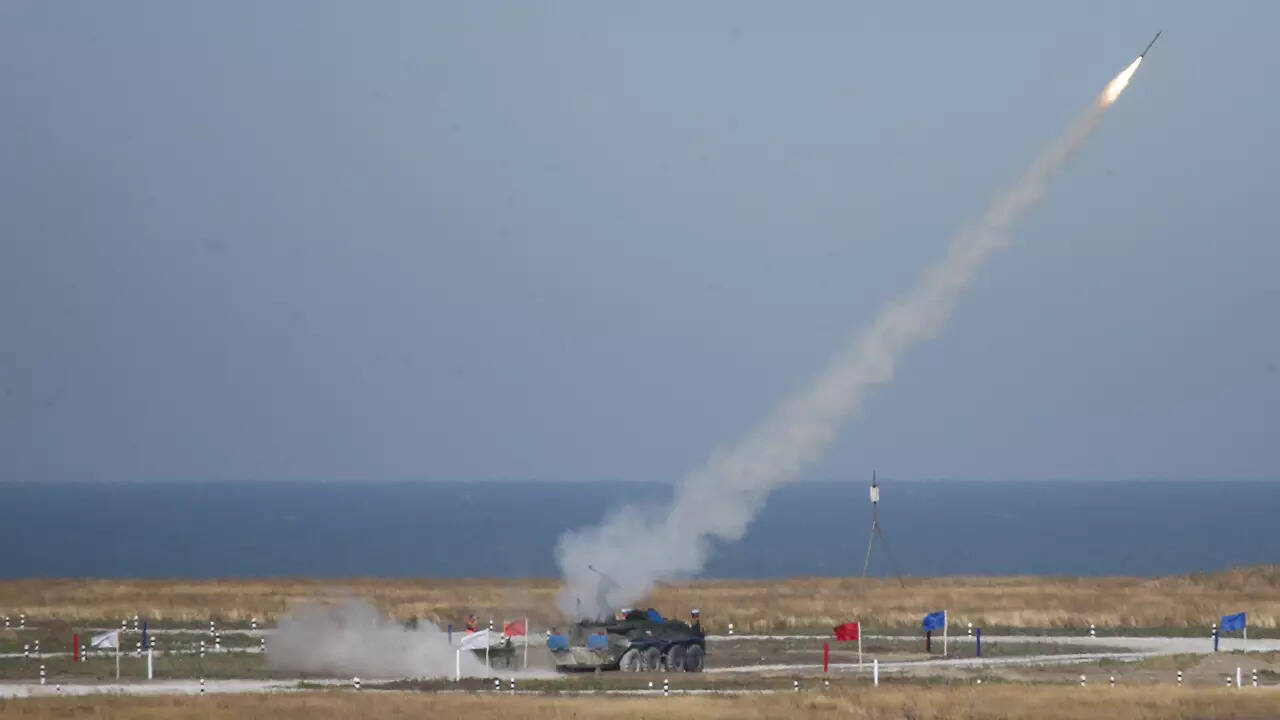
The Pahalgam terrorist attack from April 22 2025 escalated India-Pakistan tensions causing the Indian Army to enhance western border air-defense capabilities using Igla-S Very Short Range Air Defence Systems (VSHORADS). This emergency procurement agreement valued at ₹260 crores enabled India to acquire the Russian-Russian man-portable missiles for rapid independent ground-based defense. Security in a volatile region will gain strength through the deployment of Igla-S systems which successfully detects and engages fighter jets and attack helicopters and drones.
Summary:
-
The Indian Army has established Igla-S man-portable air defence missiles as a part of its ₹260-crore emergency procurement on the western border to protect its frontlines against aerial threats which include drones.
-
Integration between fast response capabilities and India's Integrated Drone Detection and Interdiction Systems enables immediate deadly ground-based responses to aerial and drone threats thus strengthening the nation's retaliatory and defensive force.
Key Points:
Overview of Igla-S System:
-
Igla-S VSHORADS serves as a man-portable infrared weapon which can fight aerial battles against fighter jets helicopters and unmanned aerial vehicles with its quick self-directed defense capabilities.
-
These systems operate from India's western border areas to speed up ground-based defense capabilities independently from the need of air support thereby enhancing national security against potential threats.
Tactical Flexibility and Efficiency:
-
Quick reaction System: When activated through the Igla-S systems users can initiate launch operations in seconds which ensures infantry troops and static posts can protect themselves by interrupting targeting hostile aircraft or drones alone and independently of air force assistance.
-
Collab with local defense system: The Igla-S missiles operate as part of the Indian Integrated Drone Detection and Interdiction Systems which defend against aerial threats at ranges up to 8 km. All defense components must use jammers and spoofers alongside lasers and rocket-powered VSHORADS to form a protective aerial defense system that protects a 8 km area.
Strategic Significance:
-
Retaliation: The missiles' deployment establishes India as a defender who will counters hostile aerial threats thus creating a security deterrent for future air and unmanned weapon system operations. By adopting this strategy India enhances its strategic approach through responsive retaliation capabilities that avoid a broad air force escalation.
-
Operational Benefits: The deployment of Igla-S sensors at forward locations gives Indian military commanders strategic operational benefits which include fast airspace interdiction and enhanced availability of airborne assets.
Ongoing Modernization Efforts:
-
Expansion Plan: Indian military modernization efforts include a rapid procurement process for additional 48 Igla-S launchers together with 90 more missiles which will speed up expansion plans. The Indian military continues to investigate the development of laser-guided VSHORAD systems which would contain improved counter-jamming technology.
-
Make in India: The government runs Igla system refurbishment efforts under Make in India as part of their national objective to boost homegrown air defense technology while extending equipment lifespan.
Escalating India-Pakistan Tensions:
-
Pahalgam Attack: The Pahalgam attack which resulted in 26 fatalities caused Indian forces to heighten border security while pledging a “befitting response” to the incident. India implements Igla-S missile deployments as a part of its defensive plans intended to safeguard vulnerable areas exposed to cross-border violations.
-
Strategic Plan: These air defense systems join diplomatic measures like Indus Waters Treaty suspension to communicate India's active defensive position toward Pakistani provocations.
Conclusion:
Igla-S missiles operated by the Indian Army serve as a vital defense enhancement for both air security and strategic preparedness on the western frontier during Pakistan-Indialodged tensions. This weapon system provides India with quick ground-based aerial protection against multiple threats and strengthens its retaliatory capacity in maintaining stability during military confrontations. Defense modernization in India still progresses as the Igla-S induction demonstrates India's strategic preference for layered systems designed to address drone threats in combination with other defense assets for improving national security.



 Modi to Inaugurate Kashmir’s First All-Weather Rail Link with Delhi
Modi to Inaugurate Kashmir’s First All-Weather Rail Link with Delhi Tamil Nadu Declares Greater Flamingo Sanctuary at Dhanushkodi
Tamil Nadu Declares Greater Flamingo Sanctuary at Dhanushkodi Rising Cancer in India: The Role of Air Pollution in Lung Cancer Cases
Rising Cancer in India: The Role of Air Pollution in Lung Cancer Cases Ancient Astrolabe Discovered at Raigad Fort, Revealing Maratha Empire’s Astronomical Insights
Ancient Astrolabe Discovered at Raigad Fort, Revealing Maratha Empire’s Astronomical Insights The next Census has been scheduled to finish by March 2027: Government
The next Census has been scheduled to finish by March 2027: Government New Domicile, Reservation & Language Policies Notified for Ladakh
New Domicile, Reservation & Language Policies Notified for Ladakh India’s Literacy Rises to 80.9%, Gaps Remain: PLFS 2024
India’s Literacy Rises to 80.9%, Gaps Remain: PLFS 2024 EV Imports Allowed at 15% Duty to Boost Local Production
EV Imports Allowed at 15% Duty to Boost Local Production India’s First AI-Focused SEZ launched in Nava Raipur To Push India Towards Digital Modernization
India’s First AI-Focused SEZ launched in Nava Raipur To Push India Towards Digital Modernization Devi Ahilyabai Holkar Jayanti 2025 celebrated on 31st May
Devi Ahilyabai Holkar Jayanti 2025 celebrated on 31st May






